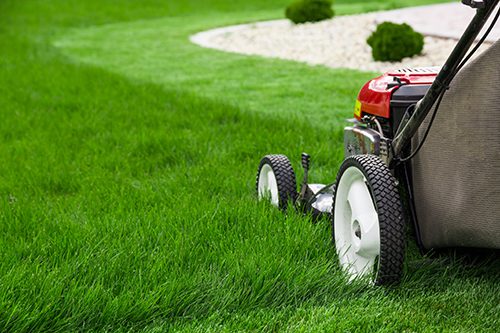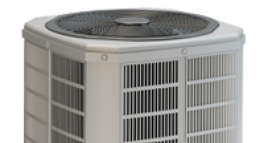Summer is here, and with it comes the great tradition of lawn care. For many homeowners, lawn care is a point of pride. But maintaining a lush lawn isn’t always easy, especially when it starts to get hot. Today, we’ll look at some lawn care tips you can use regardless of where you live to keep your lawn looking great this summer and beyond.
Fertilize Your Lawn in Early Summer
Fertilizing your lawn is one of the best steps you can take to make it look great. Doing so early in the summertime (mid-May through late June) gives your grass the nutrients it needs right before peak growing season. This is especially important if you live in areas that experience drought. No matter where you live, be sure to fertilize for a lush, thick lawn.
The best type of fertilizer for your grass depends on many factors. If your grass struggles with grubs or pests (common in Northern states), consider a fertilizer with insect control. For drier areas prone to drought, look for fertilizers that encourage water penetration and strong root systems. When in doubt, a trip to your local home and garden store is always helpful. You’ll have a chance to talk with experts who know what’s best for your type of lawn seed and region.
After you apply fertilizer, lightly water your grass to let the fertilizer sink in. Watering for 10 to 15 minutes usually does the trick. Just make sure you don’t apply fertilizer right before a downpour. This may cause the fertilizer to run off instead of sinking into the soil.
Fertilize Again in Late Summer
Fertilizing isn’t a one-and-done enterprise. The lushest lawns often require a second application of fertilizer in the late summer/early fall, too. This will help you get a head-start for the next year.
Lawns that use warm-season grasses, such as those in the South, typically require a second application around Labor Day. Cool-season grasses, like those found in Northern states, can generally wait a little longer for their second application. Aim to fertilize around Halloween for these grasses.
Mow High & Let Clippings Lie
A short lawn isn’t necessarily a healthy lawn. Though it may be tempting to cut your lawn short to show off its greenness, cutting it too short can do more harm than good. This is especially true in hotter, drier climates. If the grass is too short, it’s much more likely to burn. Additionally, taller blades of grass are more efficient at “finding” water because they develop deeper root systems. Tall grass also shades the soil, which means you won’t need to water the lawn as often.
Set the lawnmower blades as high as possible when mowing. Don’t worry about bagging the clippings, either. They’ll give the soil an extra dose of nutrients and some additional shade.
Water Your Lawn the Right Way: Deeply
It’s best to water your lawn deeply, infrequently, and early in the morning. Rather than watering your lawn daily, try watering for an extended period each week. For example, you might water for 40 minutes every Sunday, Wednesday, and Friday. This allows water to soak into the ground, which promotes deep, more drought-resistant root systems. You can even use a soaker hose or low-angle sprinkler to boost efficiency.
Most importantly, don’t water in the middle of the day. Watering during the hottest times of the day is inefficient, wastes water, and doesn’t help your lawn. You want to water before the sun gets too high in the sky or after it starts to set. This means always water in the morning or evening. Many cities even have summer water restrictions that limit when you can water your lawn and for how long. Be sure to check and abide by any local rules.
If you notice standing water in your lawn, it’s a good idea to learn more about the causes and solutions.
Keep an Eye Out for Weeds
You’ll likely need to watch for weeds all summer long. The best ways to get rid of weeds are to dig them out at the root or spot treat them with a weed killer.
Avoid the temptation of using a fertilizer with weed killer in it if you have shrubs, trees, or flowers near your grass. The weed-killing chemical in many such fertilizers targets broadleaf plants. Many non-grass landscaping plants—like trees, shrubs, and flowers—are broadleaf plants. So, if you use a fertilizer with weed killer, you may do unintended harm to other plants. Though it make take longer to spot-treat or uproot weeds, your other plants will thank you for it.
Bonus Tip: Consider Xeriscaping
Taking care of a lawn requires a lot of time and resources, especially water. Fortunately, you can still have a great-looking lawn without the grass if you want though xeriscaping.
Xeriscaping is landscaping designed for water conservation. You can use different plants, succulents, and trees to bring color and pop to your lawn while being water efficient. No-mow lawns are also becoming more popular. These lawn seed mixes are drought-resistant and low maintenance, with the same lushness you’d expect from traditional seed.
No matter how you choose to create and maintain your yard, getting a head-start now will ensure your outdoor space is ready for fun all summer long.









